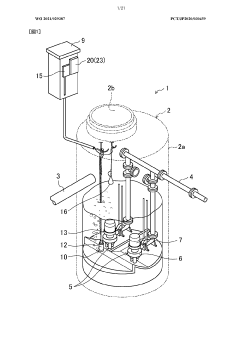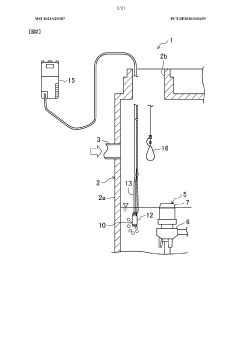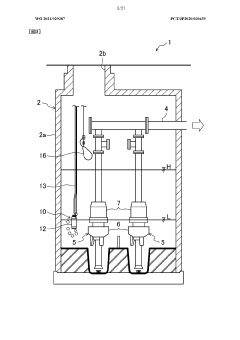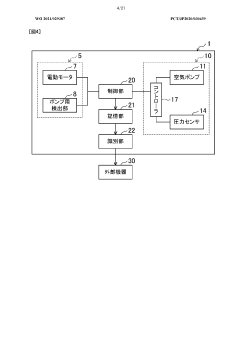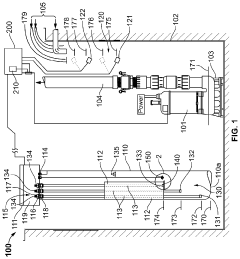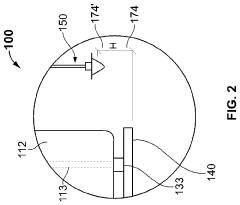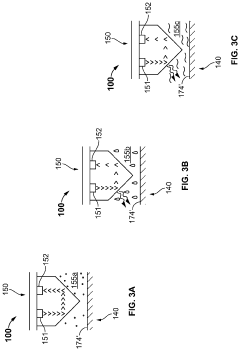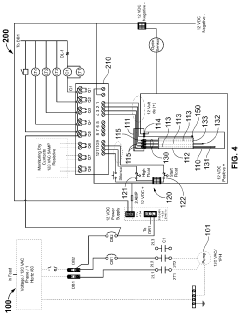How submersible pumps assist in comprehensive water tables analysis.
JUL 15, 20259 MIN READ
Generate Your Research Report Instantly with AI Agent
Patsnap Eureka helps you evaluate technical feasibility & market potential.
Submersible Pump Technology Evolution and Objectives
Submersible pumps have undergone significant technological evolution since their inception in the early 20th century. Initially designed for dewatering applications in mining and construction, these pumps have evolved to play a crucial role in comprehensive water table analysis. The primary objective of this evolution has been to enhance the efficiency, reliability, and versatility of submersible pumps in various hydrological settings.
The development of submersible pump technology has been driven by the growing need for accurate and real-time water table data. As global water management challenges intensified, the demand for more sophisticated pumping systems capable of providing detailed hydrological information increased. This led to the integration of advanced sensors and monitoring equipment into submersible pump designs, enabling them to collect and transmit valuable data about water table characteristics.
One of the key technological advancements in submersible pumps has been the improvement in materials and construction techniques. Modern pumps utilize corrosion-resistant materials and advanced sealing technologies, allowing them to operate in diverse water conditions for extended periods. This durability is essential for long-term water table monitoring projects, where consistent and reliable data collection is crucial.
The incorporation of variable frequency drives (VFDs) into submersible pump systems marks another significant milestone. VFDs allow for precise control of pump speed and output, enabling researchers to adjust water extraction rates based on specific study requirements. This flexibility is particularly valuable in water table analysis, as it allows for the simulation of various pumping scenarios and their impact on groundwater levels.
Advancements in telemetry and data logging capabilities have revolutionized the role of submersible pumps in water table analysis. Modern pumps can be equipped with sensors that measure parameters such as water level, temperature, conductivity, and flow rate. This data can be transmitted in real-time to centralized monitoring systems, providing researchers with a comprehensive and dynamic view of water table conditions.
The miniaturization of pump components has also contributed to the evolution of submersible pump technology. Smaller, more efficient pumps can now be deployed in narrow boreholes and challenging geological formations, expanding the range of environments where detailed water table analysis can be conducted. This has been particularly beneficial in studying complex aquifer systems and fractured rock formations.
Looking ahead, the objectives for further development of submersible pump technology in water table analysis are focused on enhancing data accuracy, expanding monitoring capabilities, and improving energy efficiency. Researchers are exploring the integration of artificial intelligence and machine learning algorithms to analyze pump performance data and predict water table changes. Additionally, there is a growing emphasis on developing eco-friendly pump designs that minimize environmental impact while maximizing data collection efficiency.
The development of submersible pump technology has been driven by the growing need for accurate and real-time water table data. As global water management challenges intensified, the demand for more sophisticated pumping systems capable of providing detailed hydrological information increased. This led to the integration of advanced sensors and monitoring equipment into submersible pump designs, enabling them to collect and transmit valuable data about water table characteristics.
One of the key technological advancements in submersible pumps has been the improvement in materials and construction techniques. Modern pumps utilize corrosion-resistant materials and advanced sealing technologies, allowing them to operate in diverse water conditions for extended periods. This durability is essential for long-term water table monitoring projects, where consistent and reliable data collection is crucial.
The incorporation of variable frequency drives (VFDs) into submersible pump systems marks another significant milestone. VFDs allow for precise control of pump speed and output, enabling researchers to adjust water extraction rates based on specific study requirements. This flexibility is particularly valuable in water table analysis, as it allows for the simulation of various pumping scenarios and their impact on groundwater levels.
Advancements in telemetry and data logging capabilities have revolutionized the role of submersible pumps in water table analysis. Modern pumps can be equipped with sensors that measure parameters such as water level, temperature, conductivity, and flow rate. This data can be transmitted in real-time to centralized monitoring systems, providing researchers with a comprehensive and dynamic view of water table conditions.
The miniaturization of pump components has also contributed to the evolution of submersible pump technology. Smaller, more efficient pumps can now be deployed in narrow boreholes and challenging geological formations, expanding the range of environments where detailed water table analysis can be conducted. This has been particularly beneficial in studying complex aquifer systems and fractured rock formations.
Looking ahead, the objectives for further development of submersible pump technology in water table analysis are focused on enhancing data accuracy, expanding monitoring capabilities, and improving energy efficiency. Researchers are exploring the integration of artificial intelligence and machine learning algorithms to analyze pump performance data and predict water table changes. Additionally, there is a growing emphasis on developing eco-friendly pump designs that minimize environmental impact while maximizing data collection efficiency.
Market Demand for Water Table Analysis Solutions
The market demand for water table analysis solutions has been steadily increasing due to various factors, including growing concerns about water scarcity, environmental regulations, and the need for sustainable water management practices. Submersible pumps play a crucial role in this field by enabling accurate and comprehensive water table analysis.
In the agricultural sector, farmers and agribusinesses are increasingly relying on water table analysis to optimize irrigation practices and improve crop yields. The ability to accurately measure groundwater levels and quality helps in making informed decisions about water usage, reducing waste, and preventing over-extraction. This has led to a rising demand for submersible pumps equipped with advanced sensors and data logging capabilities.
The construction industry also contributes significantly to the market demand for water table analysis solutions. Before initiating large-scale projects, developers and engineers require detailed information about subsurface water conditions to ensure structural stability and prevent potential flooding issues. Submersible pumps assist in conducting thorough site investigations, allowing for better project planning and risk mitigation.
Environmental agencies and research institutions form another key market segment. These organizations require comprehensive water table analysis for monitoring groundwater resources, assessing pollution levels, and studying the impact of climate change on water availability. Submersible pumps with specialized sampling and monitoring features are in high demand for such applications.
The mining industry is another significant driver of market demand. Water table analysis is critical for mine dewatering operations, ensuring worker safety, and minimizing environmental impact. Submersible pumps capable of operating in harsh conditions and providing real-time data on water levels and quality are essential for efficient mining operations.
Urban planners and municipal authorities are increasingly recognizing the importance of water table analysis in sustainable urban development. As cities expand and face challenges related to water supply and stormwater management, the demand for comprehensive groundwater monitoring solutions has grown. Submersible pumps integrated with smart city infrastructure help in managing urban water resources more effectively.
The oil and gas industry also contributes to the market demand, particularly in regions where hydraulic fracturing is prevalent. Water table analysis is crucial for assessing the environmental impact of fracking operations and ensuring compliance with regulations. Submersible pumps capable of operating at great depths and in challenging environments are sought after for these applications.
As global awareness of water conservation and management increases, the market for water table analysis solutions is expected to expand further. This growth is likely to drive innovation in submersible pump technology, leading to more advanced, efficient, and integrated solutions for comprehensive water table analysis across various industries and applications.
In the agricultural sector, farmers and agribusinesses are increasingly relying on water table analysis to optimize irrigation practices and improve crop yields. The ability to accurately measure groundwater levels and quality helps in making informed decisions about water usage, reducing waste, and preventing over-extraction. This has led to a rising demand for submersible pumps equipped with advanced sensors and data logging capabilities.
The construction industry also contributes significantly to the market demand for water table analysis solutions. Before initiating large-scale projects, developers and engineers require detailed information about subsurface water conditions to ensure structural stability and prevent potential flooding issues. Submersible pumps assist in conducting thorough site investigations, allowing for better project planning and risk mitigation.
Environmental agencies and research institutions form another key market segment. These organizations require comprehensive water table analysis for monitoring groundwater resources, assessing pollution levels, and studying the impact of climate change on water availability. Submersible pumps with specialized sampling and monitoring features are in high demand for such applications.
The mining industry is another significant driver of market demand. Water table analysis is critical for mine dewatering operations, ensuring worker safety, and minimizing environmental impact. Submersible pumps capable of operating in harsh conditions and providing real-time data on water levels and quality are essential for efficient mining operations.
Urban planners and municipal authorities are increasingly recognizing the importance of water table analysis in sustainable urban development. As cities expand and face challenges related to water supply and stormwater management, the demand for comprehensive groundwater monitoring solutions has grown. Submersible pumps integrated with smart city infrastructure help in managing urban water resources more effectively.
The oil and gas industry also contributes to the market demand, particularly in regions where hydraulic fracturing is prevalent. Water table analysis is crucial for assessing the environmental impact of fracking operations and ensuring compliance with regulations. Submersible pumps capable of operating at great depths and in challenging environments are sought after for these applications.
As global awareness of water conservation and management increases, the market for water table analysis solutions is expected to expand further. This growth is likely to drive innovation in submersible pump technology, leading to more advanced, efficient, and integrated solutions for comprehensive water table analysis across various industries and applications.
Current Challenges in Groundwater Monitoring
Groundwater monitoring faces several significant challenges in the current landscape of environmental management and resource conservation. One of the primary issues is the difficulty in obtaining accurate and real-time data on water table levels and quality. Traditional monitoring methods often rely on manual measurements or fixed sensors, which can be labor-intensive and provide only intermittent snapshots of groundwater conditions.
The complexity of aquifer systems presents another challenge. Groundwater bodies are not uniform and can vary significantly in composition, flow patterns, and recharge rates across relatively small areas. This heterogeneity makes it challenging to develop comprehensive monitoring strategies that accurately represent the entire aquifer system.
Contamination detection and tracking pose additional difficulties. Pollutants can enter groundwater systems through various pathways, and their movement is often slow and unpredictable. Current monitoring techniques may not be sensitive enough to detect low concentrations of contaminants or may not provide sufficient spatial resolution to track plume migration effectively.
Climate change and increasing water demand further complicate groundwater monitoring efforts. Altered precipitation patterns and more frequent extreme weather events can lead to rapid changes in groundwater levels and quality. Meanwhile, growing populations and agricultural needs are putting unprecedented pressure on groundwater resources, necessitating more robust and responsive monitoring systems.
The cost and maintenance of monitoring infrastructure remain significant barriers to comprehensive groundwater analysis. Installing and maintaining a network of monitoring wells and sensors can be prohibitively expensive, especially for large aquifers or in remote areas. This often results in inadequate spatial coverage and data gaps that limit the effectiveness of management decisions.
Data integration and interpretation present technical challenges as well. The vast amounts of data generated by modern monitoring systems require sophisticated analysis tools and expertise to translate into actionable insights. Many organizations lack the necessary resources or technical capacity to fully leverage the data they collect.
Regulatory frameworks and standardization issues also impact groundwater monitoring efforts. Inconsistent standards and methodologies across jurisdictions can make it difficult to compare data and develop regional or national strategies for groundwater management. Additionally, evolving regulations may require frequent updates to monitoring protocols and equipment, adding to the complexity and cost of maintaining effective systems.
The complexity of aquifer systems presents another challenge. Groundwater bodies are not uniform and can vary significantly in composition, flow patterns, and recharge rates across relatively small areas. This heterogeneity makes it challenging to develop comprehensive monitoring strategies that accurately represent the entire aquifer system.
Contamination detection and tracking pose additional difficulties. Pollutants can enter groundwater systems through various pathways, and their movement is often slow and unpredictable. Current monitoring techniques may not be sensitive enough to detect low concentrations of contaminants or may not provide sufficient spatial resolution to track plume migration effectively.
Climate change and increasing water demand further complicate groundwater monitoring efforts. Altered precipitation patterns and more frequent extreme weather events can lead to rapid changes in groundwater levels and quality. Meanwhile, growing populations and agricultural needs are putting unprecedented pressure on groundwater resources, necessitating more robust and responsive monitoring systems.
The cost and maintenance of monitoring infrastructure remain significant barriers to comprehensive groundwater analysis. Installing and maintaining a network of monitoring wells and sensors can be prohibitively expensive, especially for large aquifers or in remote areas. This often results in inadequate spatial coverage and data gaps that limit the effectiveness of management decisions.
Data integration and interpretation present technical challenges as well. The vast amounts of data generated by modern monitoring systems require sophisticated analysis tools and expertise to translate into actionable insights. Many organizations lack the necessary resources or technical capacity to fully leverage the data they collect.
Regulatory frameworks and standardization issues also impact groundwater monitoring efforts. Inconsistent standards and methodologies across jurisdictions can make it difficult to compare data and develop regional or national strategies for groundwater management. Additionally, evolving regulations may require frequent updates to monitoring protocols and equipment, adding to the complexity and cost of maintaining effective systems.
Existing Submersible Pump Solutions for Water Table Analysis
01 Submersible pump design for water table management
Specialized submersible pumps are designed for efficient water table management in various applications. These pumps are engineered to operate underwater, allowing for effective control of groundwater levels and drainage in agricultural, construction, and environmental projects.- Submersible pump design for water table management: Specialized submersible pumps are designed for efficient water table management in various applications. These pumps are engineered to operate underwater, allowing for effective control of groundwater levels and drainage in agricultural, construction, and environmental projects. The design focuses on durability, energy efficiency, and adaptability to different water conditions.
- Automated control systems for submersible pumps: Advanced control systems are integrated with submersible pumps to automate water table management. These systems utilize sensors, data analytics, and remote monitoring capabilities to optimize pump operation based on real-time water level data. This automation enhances efficiency, reduces energy consumption, and allows for precise control of water tables in various environments.
- Innovative impeller designs for improved performance: Novel impeller designs are developed to enhance the performance of submersible pumps in water table applications. These designs focus on improving flow efficiency, reducing clogging, and increasing the pump's ability to handle debris and sediment. The innovative impellers contribute to extended pump life and more effective water table management in challenging conditions.
- Energy-efficient submersible pump solutions: Energy-efficient submersible pump technologies are developed to reduce power consumption in water table management applications. These solutions incorporate advanced motor designs, variable frequency drives, and optimized hydraulics to maximize pumping efficiency. The focus is on maintaining effective water table control while minimizing energy costs and environmental impact.
- Integration of submersible pumps with water treatment systems: Submersible pumps are integrated with water treatment systems to provide comprehensive water table management solutions. These integrated systems combine pumping capabilities with filtration, aeration, and purification technologies. This approach allows for simultaneous control of water levels and improvement of water quality in various applications, including environmental remediation and agricultural water management.
02 Energy-efficient submersible pump systems
Advanced submersible pump systems incorporate energy-efficient technologies to optimize performance while reducing power consumption. These innovations include improved motor designs, variable frequency drives, and intelligent control systems that adapt to changing water table conditions.Expand Specific Solutions03 Monitoring and control systems for submersible pumps
Sophisticated monitoring and control systems are integrated into submersible pump installations for water table management. These systems utilize sensors, telemetry, and automation to provide real-time data on pump performance, water levels, and environmental conditions, enabling precise control and maintenance of desired water table levels.Expand Specific Solutions04 Submersible pump materials and corrosion resistance
Advancements in materials science have led to the development of corrosion-resistant components for submersible pumps used in water table applications. These materials enhance pump durability and longevity, particularly in challenging environments with varying water chemistry and sediment content.Expand Specific Solutions05 Modular and adaptable submersible pump designs
Innovative modular designs allow for easy customization and adaptation of submersible pumps to specific water table management requirements. These flexible systems can be quickly modified or expanded to accommodate changing environmental conditions or project needs, improving overall efficiency and cost-effectiveness.Expand Specific Solutions
Key Players in Submersible Pump Industry
The market for submersible pumps in water table analysis is in a growth phase, driven by increasing demand for water resource management and environmental monitoring. The global market size is expanding, with projections indicating substantial growth in the coming years. Technologically, the field is advancing rapidly, with companies like Baker Hughes, Schlumberger, and Flowserve leading innovation. These firms are developing more efficient, durable, and data-integrated submersible pump systems. Emerging players such as ShinMaywa Industries and Ningbo Junhe Intelligent Technology are also contributing to technological advancements, particularly in smart pump solutions and data analytics for comprehensive water table analysis.
Baker Hughes Oilfield Operations LLC
Technical Solution: Baker Hughes has developed advanced submersible pump systems that integrate seamlessly with their broader suite of reservoir characterization tools. Their pumps feature high-precision pressure and temperature sensors that provide detailed information on water table dynamics. Baker Hughes' submersible pumps are equipped with advanced fluid sampling systems that allow for the collection of representative water samples at various depths and under different flow conditions[10]. The company has also implemented artificial intelligence algorithms in their pump control systems, enabling adaptive pumping strategies that optimize water extraction while minimizing environmental impact. Baker Hughes' pumps incorporate advanced materials science, utilizing corrosion-resistant alloys and composite materials to ensure long-term reliability in diverse aquifer environments.
Strengths: Integration with comprehensive reservoir characterization tools, advanced fluid sampling capabilities, and AI-driven pump control. Weaknesses: May be more oriented towards oilfield applications and potentially over-engineered for simpler water table analysis tasks.
Schlumberger Canada Ltd.
Technical Solution: Schlumberger, a global leader in oilfield services, has developed advanced submersible pump systems for comprehensive water table analysis. Their technology integrates real-time monitoring sensors with high-performance pumps to provide continuous data on water levels, quality, and flow rates. The company's submersible pumps are equipped with advanced telemetry systems that transmit data to surface control units, allowing for remote monitoring and analysis of water table conditions[1]. Schlumberger's pumps also feature adaptive flow control mechanisms that adjust pumping rates based on real-time water table data, ensuring optimal water management and preventing over-extraction[3]. Additionally, their pumps incorporate innovative filtration systems that can collect water samples at various depths, enabling detailed vertical profiling of water tables[5].
Strengths: Comprehensive data collection, real-time monitoring capabilities, and adaptive pumping technology. Weaknesses: High initial investment costs and potential complexity for smaller-scale operations.
Innovative Submersible Pump Sensing Technologies
Underwater pump system, information processing device, and computer program
PatentWO2021029387A1
Innovation
- A submersible pump system that includes a current detection unit to analyze temporal changes in the drive current, calculating specific current parameters to determine the presence and type of abnormal operations such as airlock, dry running, or foreign object blockage, and integrates a water level detector to enhance the accuracy of failure identification.
Submersible pump contaminant detection system
PatentPendingUS20230340952A1
Innovation
- A system comprising a stilling tube with integrated sensors, including conductivity and optical sensors, that calms turbulence and accurately detects hydrocarbon layers as thin as 1/16 inches, using a programmable logic controller and capacitive sensors to distinguish between media based on physical properties, ensuring precise contaminant detection and control.
Environmental Impact of Submersible Pump Usage
The use of submersible pumps in water table analysis has significant environmental implications that must be carefully considered. These pumps, while essential for data collection and water management, can potentially disrupt local ecosystems and alter natural hydrological processes. One of the primary concerns is the impact on groundwater levels. Excessive pumping can lead to a lowering of the water table, which may affect nearby vegetation, particularly deep-rooted plants that rely on consistent access to groundwater. This can result in changes to local flora and, consequently, the fauna that depend on these plant communities.
Furthermore, the operation of submersible pumps can introduce physical disturbances to aquatic habitats. The intake of water may inadvertently capture small aquatic organisms, potentially affecting local populations of microorganisms, insects, and small fish. This disruption can ripple through the food chain, impacting larger species that rely on these smaller organisms for sustenance. Additionally, the discharge of pumped water, if not properly managed, can cause erosion and sedimentation in receiving water bodies, altering stream morphology and aquatic habitats.
The energy consumption of submersible pumps is another environmental consideration. Many pumps are powered by fossil fuels, contributing to greenhouse gas emissions and air pollution. Even electrically powered pumps may indirectly contribute to carbon emissions if the electricity is sourced from non-renewable energy. This underscores the importance of considering renewable energy sources or energy-efficient pump designs to minimize the carbon footprint of water table analysis operations.
Water quality is also a concern when using submersible pumps. The process of pumping can potentially mobilize contaminants in the aquifer, leading to the spread of pollutants. This is particularly problematic in areas with historical contamination or in regions where natural geological formations contain harmful substances like arsenic or heavy metals. Careful monitoring and filtration systems may be necessary to mitigate these risks and prevent the degradation of water quality in the surrounding area.
Lastly, the installation and maintenance of submersible pumps can have localized environmental impacts. The construction of well casings and the introduction of foreign materials into the subsurface environment may alter soil structure and potentially introduce contaminants. Regular maintenance activities may also disturb local habitats and wildlife. To minimize these impacts, it is crucial to implement best practices in pump installation and maintenance, including the use of environmentally friendly materials and minimally invasive techniques.
Furthermore, the operation of submersible pumps can introduce physical disturbances to aquatic habitats. The intake of water may inadvertently capture small aquatic organisms, potentially affecting local populations of microorganisms, insects, and small fish. This disruption can ripple through the food chain, impacting larger species that rely on these smaller organisms for sustenance. Additionally, the discharge of pumped water, if not properly managed, can cause erosion and sedimentation in receiving water bodies, altering stream morphology and aquatic habitats.
The energy consumption of submersible pumps is another environmental consideration. Many pumps are powered by fossil fuels, contributing to greenhouse gas emissions and air pollution. Even electrically powered pumps may indirectly contribute to carbon emissions if the electricity is sourced from non-renewable energy. This underscores the importance of considering renewable energy sources or energy-efficient pump designs to minimize the carbon footprint of water table analysis operations.
Water quality is also a concern when using submersible pumps. The process of pumping can potentially mobilize contaminants in the aquifer, leading to the spread of pollutants. This is particularly problematic in areas with historical contamination or in regions where natural geological formations contain harmful substances like arsenic or heavy metals. Careful monitoring and filtration systems may be necessary to mitigate these risks and prevent the degradation of water quality in the surrounding area.
Lastly, the installation and maintenance of submersible pumps can have localized environmental impacts. The construction of well casings and the introduction of foreign materials into the subsurface environment may alter soil structure and potentially introduce contaminants. Regular maintenance activities may also disturb local habitats and wildlife. To minimize these impacts, it is crucial to implement best practices in pump installation and maintenance, including the use of environmentally friendly materials and minimally invasive techniques.
Data Management in Water Table Analysis
Effective data management is crucial for comprehensive water table analysis when utilizing submersible pumps. These pumps play a vital role in collecting water samples and measuring various parameters, generating substantial amounts of data that require careful handling and interpretation.
The primary challenge in data management for water table analysis lies in the volume and complexity of information gathered. Submersible pumps equipped with sensors can continuously monitor water levels, temperature, pressure, and chemical composition. This real-time data collection necessitates robust storage systems and efficient data processing algorithms to handle the influx of information.
To address these challenges, modern water table analysis systems often employ cloud-based storage solutions. These platforms offer scalability, allowing for the accommodation of growing datasets as monitoring efforts expand. Cloud storage also facilitates remote access to data, enabling researchers and technicians to analyze information from various locations, enhancing collaboration and decision-making processes.
Data integration is another critical aspect of managing information from submersible pumps. The diverse range of parameters measured requires a unified system that can correlate different data types. For instance, water level measurements must be integrated with geological data, precipitation records, and land use information to provide a comprehensive understanding of the water table dynamics.
Quality control measures are essential in ensuring the reliability of data collected by submersible pumps. Automated data validation algorithms can flag anomalous readings, helping to identify sensor malfunctions or environmental disturbances that may affect data accuracy. Regular calibration of sensors and pumps is also crucial for maintaining data integrity over extended monitoring periods.
Visualization tools play a significant role in translating raw data into actionable insights. Geographic Information Systems (GIS) are commonly used to create spatial representations of water table data, allowing for the identification of trends and patterns across different locations. Time-series analysis tools help in understanding temporal variations in water table characteristics, crucial for predicting future changes and informing water management strategies.
As the volume of data continues to grow, machine learning and artificial intelligence techniques are increasingly being applied to water table analysis. These advanced algorithms can process large datasets to identify complex relationships and predict future water table behaviors, enhancing the value of data collected by submersible pumps.
The primary challenge in data management for water table analysis lies in the volume and complexity of information gathered. Submersible pumps equipped with sensors can continuously monitor water levels, temperature, pressure, and chemical composition. This real-time data collection necessitates robust storage systems and efficient data processing algorithms to handle the influx of information.
To address these challenges, modern water table analysis systems often employ cloud-based storage solutions. These platforms offer scalability, allowing for the accommodation of growing datasets as monitoring efforts expand. Cloud storage also facilitates remote access to data, enabling researchers and technicians to analyze information from various locations, enhancing collaboration and decision-making processes.
Data integration is another critical aspect of managing information from submersible pumps. The diverse range of parameters measured requires a unified system that can correlate different data types. For instance, water level measurements must be integrated with geological data, precipitation records, and land use information to provide a comprehensive understanding of the water table dynamics.
Quality control measures are essential in ensuring the reliability of data collected by submersible pumps. Automated data validation algorithms can flag anomalous readings, helping to identify sensor malfunctions or environmental disturbances that may affect data accuracy. Regular calibration of sensors and pumps is also crucial for maintaining data integrity over extended monitoring periods.
Visualization tools play a significant role in translating raw data into actionable insights. Geographic Information Systems (GIS) are commonly used to create spatial representations of water table data, allowing for the identification of trends and patterns across different locations. Time-series analysis tools help in understanding temporal variations in water table characteristics, crucial for predicting future changes and informing water management strategies.
As the volume of data continues to grow, machine learning and artificial intelligence techniques are increasingly being applied to water table analysis. These advanced algorithms can process large datasets to identify complex relationships and predict future water table behaviors, enhancing the value of data collected by submersible pumps.
Unlock deeper insights with Patsnap Eureka Quick Research — get a full tech report to explore trends and direct your research. Try now!
Generate Your Research Report Instantly with AI Agent
Supercharge your innovation with Patsnap Eureka AI Agent Platform!
